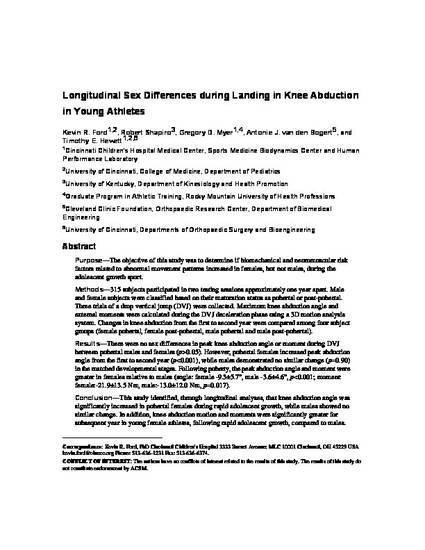
Purpose—
The objective of this study was to determine if biomechanical and neuromuscular risk factors related to abnormal movement patterns increased in females, but not males, during the adolescent growth spurt.
Methods—
315 subjects participated in two testing sessions approximately one year apart. Male and female subjects were classified based on their maturation status as pubertal or post-pubertal.Three trials of a drop vertical jump (DVJ) were collected. Maximum knee abduction angle and external moments were calculated during the DVJ deceleration phase using a 3D motion analysis system. Changes in knee abduction from the first to second year were compared among four subject groups (female pubertal, female post-pubertal, male pubertal and male post-pubertal).
Results—
There were no sex differences in peak knee abduction angle or moment during DVJ between pubertal males and females (p>0.05). However, pubertal females increased peak abduction angle from the first to second year (pp=0.90) in the matched developmental stages. Following puberty, the peak abduction angle and moment were greater in females relative to males (angle: female -9.3±5.7°, male -3.6±4.6°, pp=0.017).
Conclusion—
This study identified, through longitudinal analyses, that knee abduction angle was significantly increased in pubertal females during rapid adolescent growth, while males showed no similar change. In addition, knee abduction motion and moments were significantly greater for subsequent year in young female athletes, following rapid adolescent growth, compared to males.

This work was supported by NIH/NIAMS Grants R01-AR049735, R01-AR055563, and R01-AR056259.